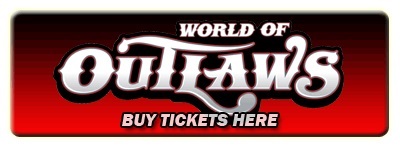Angell Park Speedway History
May of 1913 was the ground breaking year of racing at Angell Park. August 15th of 1913 marked the first horse race at the famed local park on a half mile race track. Over the three day fair, an estimated 6,500 spectators and participants were in attendance for the first ever race. Just two weeks later another race was held paying $200 for the purse. Big time money in the early days.
June of 1921 excavation for the current pavilion was begun with moving the existing building onto the new foundation with a basement and second level. The “new” building was referred to one of the finest buildings of its kind in the part of the state.
From 1913 to the late 30’s horse racing was a regular occurrence at Angell Park throughout the summer months. One of the first Midget racing shows to happen in the Midwest took place at Breese Stevens field in Madison Wisconsin on August 29th 1938.
The first known motor car race to take place at Fireman’s Park in Sun Prairie was May 30th 1939, which featured four races during the day time with a dance after the races at night. Admission was .25 cents for the event. The Decoration Day event was marred by the first ever death of a racer named Ralph Collins who was from Janesville. The motor vehicles featured in these races were known as “Tin Lizzies” In May of 1940 Badger Midget Racing Association held it premiere at Angell Park Speedway. On July 23rd 1942 an advertisement ran in the newspaper advertising the July 26th race. In the ad it stated “this may be the last race for the duration” It turn all automobile racing was suspended and all resources were allocated to war being fought.
May 30th 1946 marked the first race at the “New Track”. The Fire Department made a whole list of improvements to the facility including shorting the track length to a third mile, a purchase of nine more acres to add to the property for parking, improving the baseball diamond in the infield of the race track. A swimming pool is being planned for the summer on top of the hill behind the pavilion. Total cost of these improvements totaled $125,000 according Fire Chief Ben Blaschka. Throughout the year of 1946 fan attendance averaged around 3000 spectators while the population of the city was approximately 1,624. The final race of the year on September 2nd was slated to be 50 lap final race to pay out $250 as added prize money accumulated throughout the season by the drivers.
Sunday May 11th opened up the racing season for the year of 1947. According to the Milwaukee Journal Sunday edition, over 3000 spectators attended the race event. The article states the races are sponsored by the Fire Department. But according Fire Chief Ben Blaschka and Secretary Hank Thomas, “the Fire Department doesn’t sit back and harvest the profits, they run the race show”. The current track record was held by Billy Johnson with a time of 19.72 seconds. With this time, the average speed was 60 mph, with speeds of almost 80 mph down the straight-aways. The admission cost was raised to .75 cents.
The season of 1948 brought many different drivers and winners to the stage. Notable names such as Landi Scott, Miles Melius, Kelly Peters, and local driver Bob Waters were all winners. A new track record was set on September 23rd 1948 with a blazing time of 18.11 set by Kelly Peters. 1948 was also the first season that saw racing under the new lights.
'1949 was relatively a quiet year. The highlight was the success of local driver Al Fredenberg Sr. In just his rookie season he claimed his first win on September 25th. A new track record was set by Billy Johnson with a time of 17.58. Also the races in September were moved from the evening hours back to the daytime to ensure more sunlight and warmer temperatures.
The 1950’s brought many new drivers to race at the already famed race track. Brothers Mel and Don Kenyon were regulars throughout the decade, along with Bill Horstmeyer, Keith Thomas, Ron Erfurth, Billy Wood and Bob Clement. A race on October 1 1950 featured a $1,000 dollar purse with a 100 lap feature race. Guaranteed to start 24 cars in the feature. Admission was .80 cents.
The 1960’s was a big milestone for the famed raceway. It marked a half-century of racing at Angell Park Speedway. Times have changed in a big way over the years. From the early days of harness racing, tin lizzies, and midget race cars, Angell Park Speedway is the place for locals and drivers from out of state to come and try to tame the third mile clay oval.
Unfortnatley this decade brought hardships and tragedy to some local families and drivers. Al Fredenberg was killed when his race car flipped end over end and landed on top of him. Bill Horstmeyer died from burns suffered in a fiery crash at the Illinois State Fair. “NO MORE MIDGETS AT ANGELL PARK” was the headlines in the July 27th 1969 newspaper. Duane Hanson veteran driver and President of Badger Midgets, who started racing at Angell Park in 1948, said that he hoped the problems and issues would have been cleared up before the end of the season. Low fan attendance with very poor weather were contributing factors to the cancellation of the season. Emden Schey, Fire Department President stated that the $500 a week advertising costs along with rising costs of operation of the park, and declining numbers of volunteers, and lack of paying attendees, does not allow us to continue promotion of racing events.
1970 welcomed racing back to Angell Park Speedway. All the problems from the previous years have been settled and it’s a new year according to the Fire Department Park Board. The biggest change that happened with midget race cars was the implementation of the roll cage. In the name of safety this was a huge step in keeping the drivers much safer during a crash.
The 1980’s and 1990’s saw even more vast improvements in regards to safety to the drivers and for the fans at Angell Park Speedway. Taller fences and addition of higher bleachers were some of the safety precautions set in place at the track. In addition to the roll cages, better seat belt mechanisms with are restraints are keeping drivers much safer in crash situations. In 1982 the Pepsi Nationals race came to fruition occurring during the Labor Day Weekend. This race quickly became a high stakes national race attracting drivers from all over the world trying to take a shot at big paying purse for the final race of each season at Angell Park Speedway. The Pepsi Nationals would commonly attract 40-50 race cars every year, with one year seeing almost 60 racers vie for the title ending around one am Monday morning Labor Day.
In recent history up until 2009, the first race was always the Sunday after Mothers day, and the season would conclude Labor Day weekend. Now days the number of races range between 10-15 a season. Notable drivers that have raced at Angell Park Speedway include, Indianapolis 500 competitors Tom Bigelow, Billy Englehart, Stan Fox, NASCAR greats, Jeff Gordon, Tony Stewart, Kasey Kahne. It is safe to say fans have come from almost every state in America, with drivers and fans traveling from New Zealand and Australia.
Angell Park is still the premiere park in the City of Sun Prairie. With its beautiful old oak trees and fire themed playground, families and bus loads of children come from all around to take in a little bit of history. Still owned and operated by the Sun Prairie Volunteer Fire Department, Angell Park Speedway is in the top ten of all dirt race tracks across the country according to fans and drivers and race teams. As labeled many years ago” Angell Park Speedway” is “Midwest’s Finest Clay Oval”
1982: Billy Engelhart
1983: Kevin Olson
1984: Dan Boorse
1985: Rich Vogler
1986: Kevin Olson
1987: Kevin Olson
1988: Kevin Doty
1989: Kevin Doty
1990: Kevin Doty
1991: Stevie Reeves
1992: Marty Davis
1993: Page Jones
1994: Kevin Doty
1995: Kevin Doty
1996: Randy Koch
1997: Kevin Olson
1998: Kevin Olson
1999: Dan Boorse
2000: Jay Drake
2001: Tracy Hines
2002: Tracy Hines
2003: Davey Ray
2004: Scott Hatton
2005: Scott Hatton
2006: Rained Out
2007: Jerry Coons Jr.
2008: Brady Bacon
2009: Josh Wise
2010: Tracy Hines
2011: Rained Out
2012: Caleb Armstrong
2013: Zach Daum
2014: Christopher Bell
2015: Rico Abreu
2016: Carson Macedo
2017: Zach Daum
2018: Tanner Carrick
2019: Logan Seavey
2020: COVID Out

